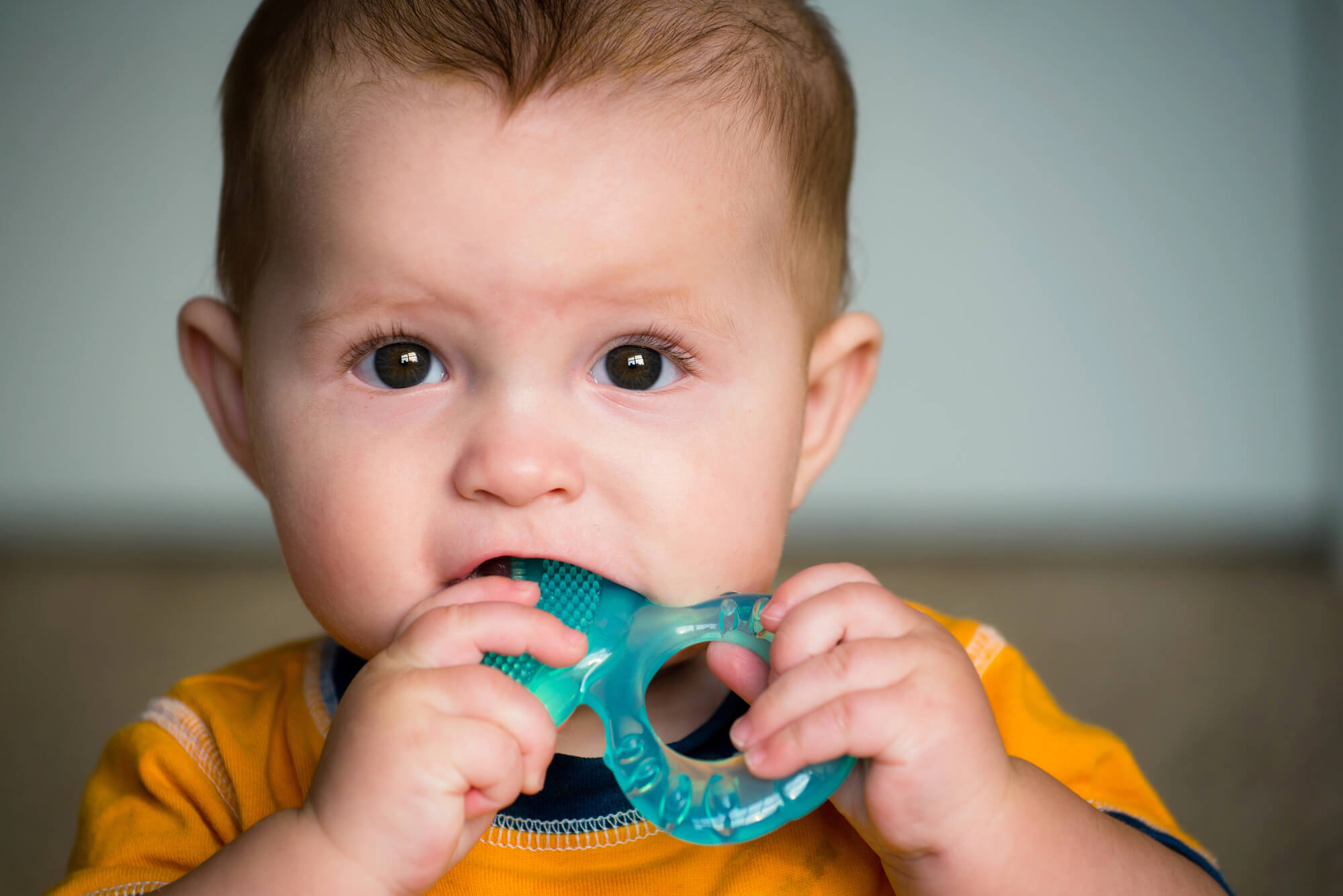Once your baby hits the 6-month mark, you may notice that they’ve become moodier. Congratulations! Your child is teething. This, and other moments, are milestones in a kid’s primary teeth development process, and being unaware of them will have you seeking a Smyrna pediatric dentistry expert for every small change in your baby’s mouth.
A kid’s growth is an intricate process with numerous nuances that we’re often unaware of, and tooth development isn’t an exception. We created this guide to help you understand this process better, with tips from expert pediatric dentists on how to avoid any possible unwanted consequences.

What’s a Baby Teeth Chart?
A baby teeth chart shows you when each of your baby’s first set of teeth—also known as primary teeth—will come out and then fall out. Of course, each kid is different. Nutrition during pregnancy, pre-existing medical conditions, and even environmental factors can impact their primary tooth growth.
Still, a baby teeth chart provides a reliable source of information for parents to rely on and eases their worries. You can find data on the common eruption order of their teeth, the total number of them at each stage, and when your baby is most likely to suffer the most discomfort.
That way, when your baby starts suddenly crying louder than ever before, you’ll know the reason behind it.
In What Order Do Baby Teeth Appear?
Teething is the process in which a baby’s first set of teeth appear. It usually begins when they’re between six and 12 months old and lasts until they’re approximately three years of age.
The development of the mouth happens in four stages:
- The first stage begins during gestation, at about six weeks of pregnancy. Here, the basic substance of the tooth forms.
- At around three to four months of gestation, the hard tissue surrounding the teeth forms.
- The third stage happens when the child is already born. At approximately six months old, their primary teeth start to stick out through the gums.
- Finally, the child loses their baby teeth because their permanent smile is on the way.
In total, 20 baby teeth emerge: 10 on the upper jaw and 10 on the lower jaw. Teeth tend to fill in pairs, starting with the two front teeth, or central incisors. Here is a detailed guide with the approximate age range for when each baby tooth will come in.
Upper teeth
- At 8 to 12 months, the central incisor emerges
- At 9 to 13 months, the lateral incisor emerges
- At 13 to 19 months, the first molar emerges
- At 16 to 22 months, the canine emerges
- At 25 to 33 months, the second molar emerges
Bottom teeth
- At 6 to 10 months, the central incisor emerges
- At 10 to 16 months, the lateral incisor emerges
- At 14 to 18 months, the first molar emerges
- At 17 to 23 months, the canine emerges
- At 23 to 31 months, the second molar emerges
Still, keep in mind that every child is different. The eruption sequence can vary, so don't be too concerned if your baby doesn't follow the pattern above. Another fact worth noting is that girls tend to have their teeth earlier than boys.
If it’s been a year after the expected time and there’s still no trace of their baby teeth, then you should consult with your child's dentist. They will check to make sure the teeth are developing properly and that there’s no underlying issue hampering their growth.
Did you know? Teeth development is greatly influenced by the mother's diet during pregnancy. Consuming vitamins C, D, P, and calcium in sufficient amounts is crucial. Moreover, medications such as tetracycline should be avoided as they may discolor your baby’s developing teeth.

Is Teething Painful?
Teething can be painless or not, depending on the baby. It’s very common for them to be irritable, cry, and, in some cases, even catch a low-grade temperature. That’s because babies aren’t used to dealing with discomfort, so they will openly express their emotions.
The discomfort stems mostly from the gums around the emerging teeth, which become swollen and tender. Some tips to soothe a teething baby are:
- Using a clean finger or moist gauze, massage your baby's gums. You can also soak a clean washcloth in water and place it in the fridge. After a few minutes, let your baby chew on it for relief.
- Use a chilled teething ring (not frozen) or a cold spoon to keep their gums cool.
- When your baby is about six months old and has begun eating solid foods, try serving them soft fruits like mashed bananas straight from the refrigerator.
- Excessive drooling is a common side effect of teething. To prevent skin irritation, keep a soft cloth at hand and clean the area around their mouth regularly.
Even if your baby seems particularly uncomfortable, steer clear of teething necklaces or over-the-counter medications, especially anything containing benzocaine or lidocaine. If you’re worried, contact your dentist for personalized advice.
At What Age Do Baby Teeth Fall Out?
Around age six, your child will start to lose their primary teeth. The central incisors tend to be the first teeth to fall, and the last ones are the second molars, around age 12. The following list gives an approximate age range for primary tooth loss:
Upper teeth
- The central incisor falls at 6 to 7 years
- The lateral incisor falls at 7 to 8 years
- The first molar falls at 9 to 11 years
- The canine falls at 10 to 12 years
- The second molar falls at 10 to 12 years
Bottom teeth
- The central incisor falls at 6 to 7 years
- The lateral incisor falls at 7 to 8 years
- The first molar falls at 9 to 11 years
- The canine falls at 9 to 12 years
- The second molar falls at 10 to 12 years
There will be a total of 32 permanent teeth.
Sometimes, a kid’s primary teeth won’t fall. In most cases, it’s because the permanent teeth haven’t developed yet, but we recommend visiting a dental office to be sure.
If there’s a permanent tooth underlying that doesn’t emerge in time, it can become crooked, creating the need for an orthodontic treatment.
.jpg)
Reach Out to a Smyrna Pediatric Dentistry Professional!
Knowing what to expect from your baby’s teething process can save you many sleepless nights. However, if your child doesn’t follow these dates to the letter, don’t fret. Each kid is unique, and their development will go according to their body’s needs.
At around age one—or six months after the first tooth’s emergence—you should bring them to Happy Harpeth for the first checkup. From then on, we’ll accompany you through every step of the process, so don’t be afraid to reach out!





